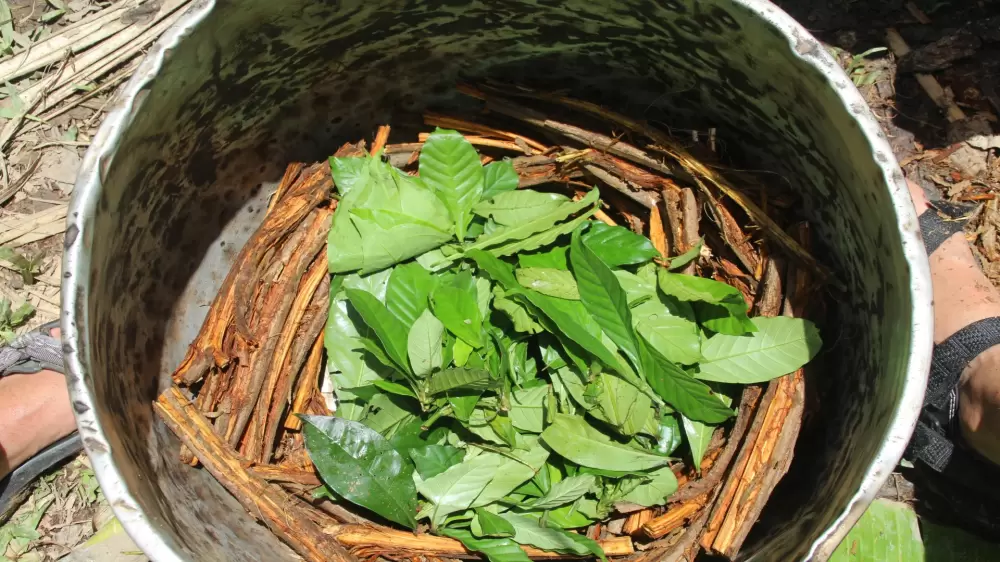WHAT IS A MAO INHIBITOR?

MAOIs or with a difficult word Monoamine oxidase inhibitors. The word says it all: it inhibits something. But how exactly does this work? In this article, we'll tell you all about what an MAOI is and how they work.
An MAOI, what is it?
An MAOI is a substance that inhibits the monoamine oxidase (MAO) in our body. This substance is responsible for breaking down serotonin and dopamine in our brains, among other things. If you use such an inhibitor simultaneously with psychedelic drugs, your brain will get too much MAO, giving the drugs a (too) strong effect. Indeed, monoamine oxidase is capable of switching off most tryptamines (parts in your brain). Therefore, inhibitors can be used to make tryptamines stronger in the body.
For example, the substances DMT and 5-MeO-DMT can become active after ingestion by mouth. Normally DMT is not active when taken orally, but when combined with an MAOI it is.
Two types of MAOIs
There are two different types of MAOIs: irreversible and reversible. Irreversible inhibitors include hydrazide, iproniazide and phenelzine and permanently bind to enzymes and then stop working for 1-2 weeks after ingestion. They are often used clinically to treat depression. Reversible inhibitors such as moclobemide, are also used as antidepressants, but are effective for up to about 24 hours.
Combination with Ayahuasca and DMT
Among recreational drug users, reversible MAOIs are widely used, as for example with Ayahuasca. They are also often used to enhance the effects of magic mushrooms containing psilocybin. When DMT is taken as a pure plant extract together with a pure MAOI, it greatly reduces the body burden. This is also why DMT-containing leaves or seeds are often combined with inhibitors such as Peganum harmala seeds to activate its psychedelic properties.
Combination with psilocybin
A combination with psilocybin and an inhibitor is also called psilohuasca. You can use these two in combination, but it is not necessarily necessary for them to work properly, unlike DMT. If you take an MAOI in combination with magic truffles or magic mushrooms, you will only get a longer and deeper trip. For this, you need less psilocybin - i.e. less drugs - for an intense trip. A good inhibitor in combination with psychedelics is passion flower. This combination makes for a deep and long trip without being too risky.
Passionflower
Besides combining well with an MAOI, this flower also has medicinal properties. It acts as a kind of natural sedative, but is also effective against nausea, anxiety and insomnia. A good combination with DMT, as this substance often brings nausea. You can use passionflower as a tea in its pure form, as an extract or as a tincture.
List of Monoamine oxidase inhibitors
You can find MAO inhibitors in, among others:
- Banisteriopsis Caapi
- Syrian rue (or Peganum harmala)
- Passion flower
- Grapefruit
- Yohimbe
- Rasagiline (SSRI)
- Selegiline (SSRI)
- Nardil (phenelzine)
- Parnate (tranylcypromine)
- Banisteriopsis caapi (ingredient of ayahuasca)
- In some antidepressants.
Risks
The risks of using MAOIs should not be underestimated. Most inhibitors stimulate the so-called cardiovascular effects of tyramine and other monoamines. These are found in many types of food: aged cheese, beer, wine, pickled herring, chicken liver, yeast, coffee, citrus fruits, figs, broad beans, chocolate and cream.
Eating these while inhibiting Monoamine oxidase can cause a hypertension crisis: a dangerously high rise in your blood pressure. You should also be careful with other psychoactive substances. Think of amphetamines, narcotics and sedatives, anti-histamines, alcohol, painkillers and antidepressants.

















